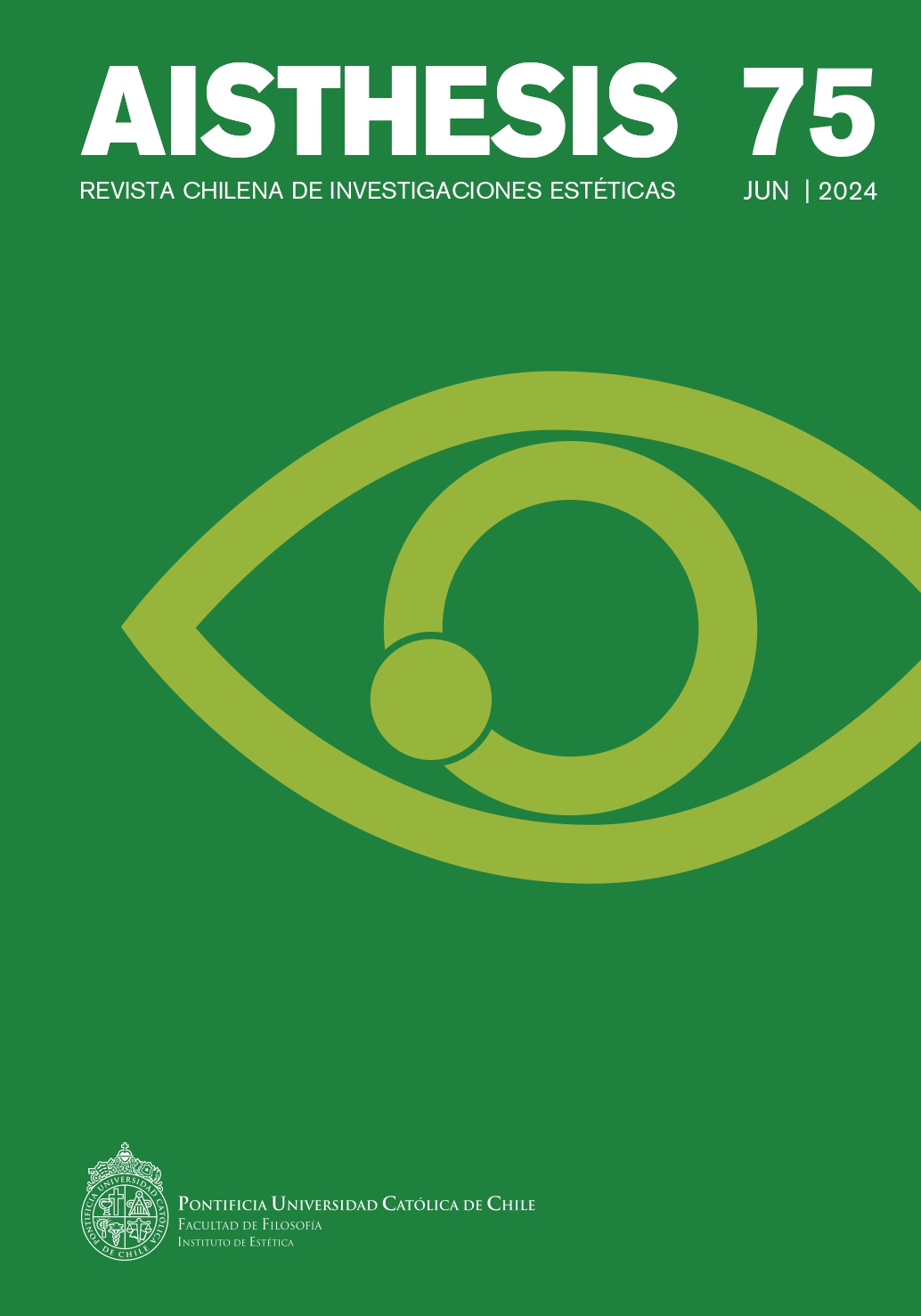The Cosmic Flower Bifrontality and Thirdness in Jorge Acha’s Amapola
Main Article Content
Abstract
The article aims to analyze the structure of characters in the film screenplay Amapola by Jorge Acha drawing a parallelism with the tricotomic cosmological structure proposed by Charles Sanders Peirce. Likewise the vegetal metaphysics of Maurice Maeterlinck and Emanuele Coccia are recovered, especially in their conception of the flower as a mediating element between the terrestrial and the aerial, and what this hypothesis has of similarity with the Peircean conception and, therefore, according to our proposal, with that of Acha's script. Thus, we proceed methodologically by explaining and arguing the similarities between the cosmologies of the analyzed text and the proposed philosophical sources. In this way, the essay seeks to show how the script has a form based on oppositions with continuity between its parts that bring it closer, in that sense, to the baroque aesthetic and differentiate it from the oppositions without continuity that structure the dominant thought and worldview in the West.
Downloads
Article Details

This work is licensed under a Creative Commons Attribution-NonCommercial-ShareAlike 4.0 International License.
All contents of this electronic edition are distributed under the Creative Commons license of "Attribución-shareAlike 4.0 Internacional" (CC-BY-SA). Any total or partial reproduction of the material must mention its origin.
The rights of academic works published in this publication belong to their authors., who grant to AISTHESIS: Revista Chilena de Investigaciones Estéticas the license for its use. The management of the permits and the authorization of the publication of the images (or of any material) that contains copyright and its consequent rights of reproduction in this publication is the sole responsibility of the authors of the articles
References
Referencias
Acha, Jorge Luis. «Amapola». Escritos póstumos volumen 2. Ítaca, 2014, pp. 95-132.
Aguilar, G. Otros mundos. Un ensayo sobre el nuevo cine argentino. Santiago Arcos, 2006.
Bernstein, Gustavo. «Prólogo: Anatemas de la anatomía». Escritos póstumos volumen 2, Jorge Luis Acha. Ítaca, 2014, pp. 9-94.
Cangi, Adrián. «Historicidad y transhistoricidad del barroco». Esto no es un injerto. Ensayos sobre hermenéutica y barroco en América Latina, eds. Adrián Bertorello y María José Rossi. Miño y Dávila, 2017, pp. 49-78.
Coccia, Emanuele. La vie des plantes. Une métaphysique du mélange. Payot & Rivages, 2016.
Fuhrman, Gary. «Rehabilitating Information». Entropy, vol. 12, 2010, pp. 164-196.
Graham, Angus Charles. El Dao en disputa. La argumentación filosófica en la China antigua, trad. Daniel Stern, rev. Flora Botton. Fondo de Cultura Económica, 2013.
Hui, Yuk. Art and Cosmotechnics. University of Minnesota Press, 2021.
Kusch, Rodolfo. «América profunda». Obras completas, tomo II. Fundación Ross, 2007, pp. 1-254.
Maeterlinck, Maurice. La inteligencia de las flores, trad. Juan Bautista Enseñat, 2º edición. Taller de Edición Rocca, 2014.
Martínez, Luz Ángela. «(Cuerpo desaparecido). Cuerpo desnudo. Cuerpo colonial». Esto no es un injerto. Ensayos sobre hermenéutica y barroco en América Latina, eds. Adrián Bertorello y María José Rossi. Miño y Dávila, 2017, pp. 107-24.
Norberg-Schulz, Christian. Baroque Architecture. Electa y Rizzoli, 1986.
Peirce, Charles Sanders. Writings of Charles S. Peirce Volume 5 1884-1886, ed. Christian J. W. Kloesel. Indiana University Press, 1993.
Pinkerton, Nick. «Living in the Present: An Interview with Eugène Green». Reverse Shot, 20 mar. 2015, https://reverseshot.org/interviews/entry/2026/eugene_green
Prósperi, Germán Osvaldo. «El lado oscuro de la luna. La esquizofrenia y el afuera imaginal del sujeto». DasQuestões, vol. 8, nº 2, abr. 2021, pp. 75-83.
Romero, Karolina. «El barroco andino en La nación clandestina: una lectura desde la “puesta en escena de la identidad mestiza”». Fuera de campo, vol. 1, nº 3, 2017, pp. 40-56.
Sarduy, Severo. El barroco y el neobarroco. El Cuenco de Plata, 2011.
Schroeder Rodríguez, Paul A. «Teoría del Nuevo Cine Latinoamericano: de la militancia al neobarroco». Valenciana: estudios de filosofía y letras, nº 12, jul.-dic. 2013, pp. 129-154.
Whitehead, Alfred North. Adventures of Ideas. The Free Press, 1967.
Zalamea, Fernando. América - una trama integral. Transversalidad, bordes y abismos en la cultura americana, siglos xix y xx. Universidad Nacional de Colombia, Facultad de Ciencias Humanas, 2009.
